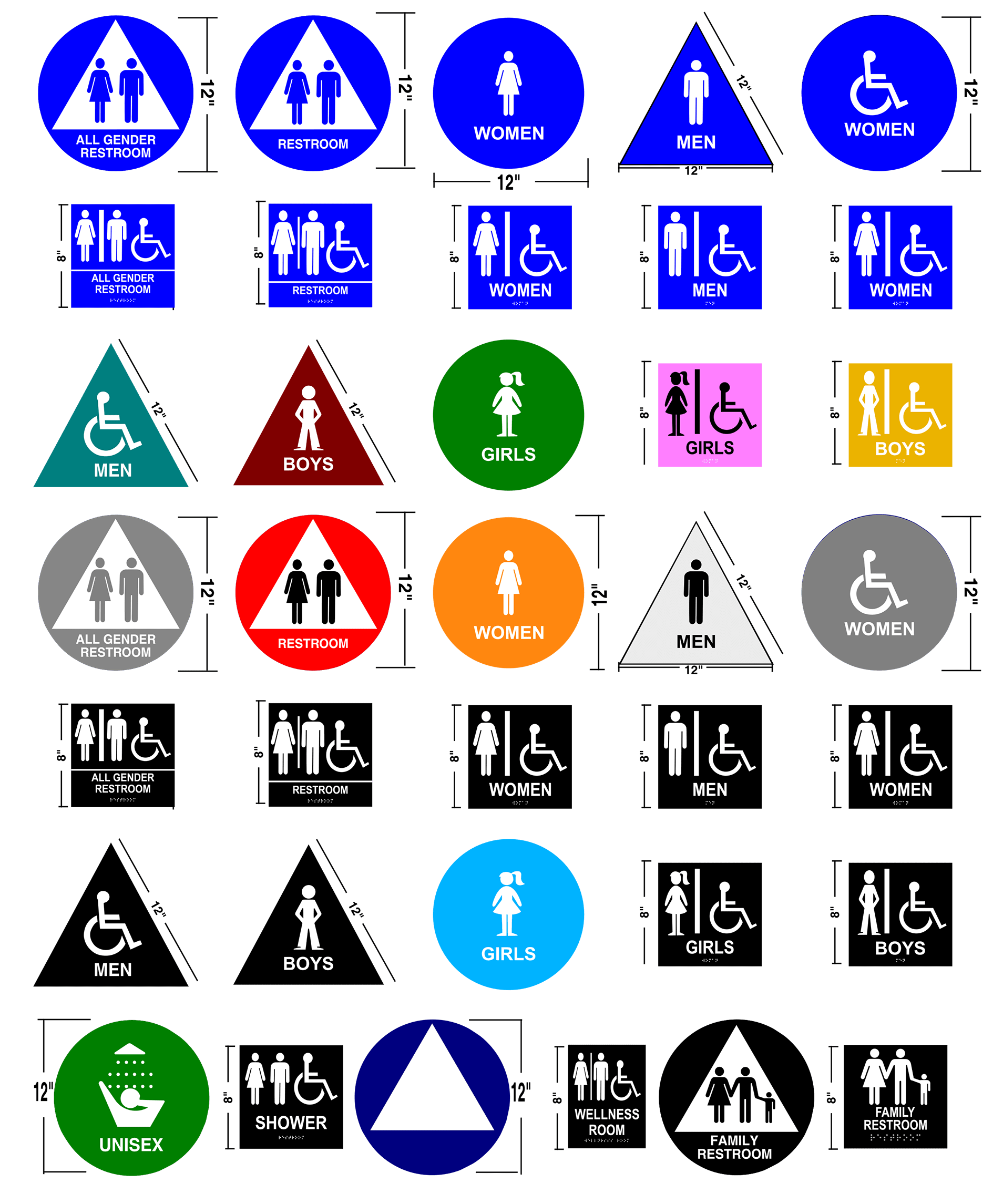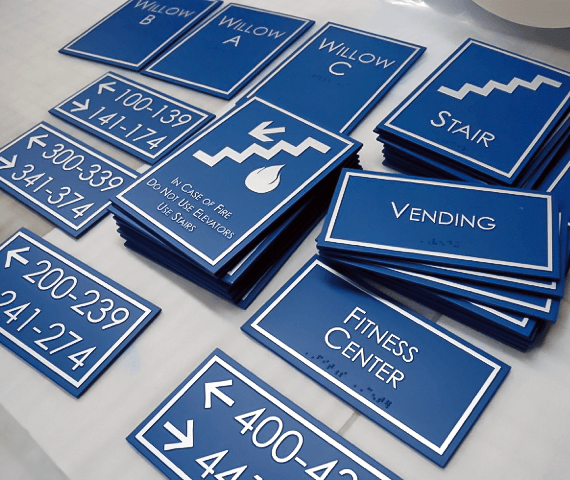The Role of ADA Signs in Abiding By Accessibility Standards
The Role of ADA Signs in Abiding By Accessibility Standards
Blog Article
Checking Out the Secret Functions of ADA Indicators for Boosted Access
In the realm of access, ADA indications offer as silent yet effective allies, making sure that spaces are comprehensive and accessible for people with specials needs. By incorporating Braille and tactile aspects, these indicators break obstacles for the visually impaired, while high-contrast shade schemes and readable fonts cater to varied aesthetic needs.
Significance of ADA Conformity
Making sure conformity with the Americans with Disabilities Act (ADA) is crucial for promoting inclusivity and equal accessibility in public rooms and workplaces. The ADA, passed in 1990, mandates that all public centers, companies, and transport solutions accommodate individuals with specials needs, ensuring they take pleasure in the same legal rights and chances as others. Compliance with ADA standards not just meets lawful obligations but likewise improves an organization's reputation by showing its commitment to diversity and inclusivity.
Among the key elements of ADA conformity is the execution of accessible signage. ADA indicators are designed to guarantee that individuals with specials needs can quickly navigate via structures and spaces. These indications should stick to specific standards regarding dimension, font, color contrast, and placement to assure presence and readability for all. Appropriately executed ADA signage helps eliminate barriers that individuals with impairments frequently come across, thus advertising their independence and self-confidence (ADA Signs).
In addition, sticking to ADA laws can mitigate the danger of possible penalties and legal consequences. Organizations that fall short to abide by ADA guidelines may deal with penalties or legal actions, which can be both monetarily burdensome and destructive to their public photo. Thus, ADA conformity is essential to cultivating an equitable atmosphere for everybody.
Braille and Tactile Aspects
The incorporation of Braille and responsive elements into ADA signs personifies the concepts of accessibility and inclusivity. These features are essential for people who are blind or aesthetically damaged, allowing them to browse public areas with better freedom and self-confidence. Braille, a tactile writing system, is necessary in offering written information in a format that can be quickly regarded through touch. It is normally put underneath the equivalent message on signs to make certain that people can access the information without visual help.
Responsive components prolong beyond Braille and consist of increased characters and signs. These elements are created to be discernible by touch, permitting individuals to determine room numbers, restrooms, leaves, and other crucial locations. The ADA sets specific standards relating to the dimension, spacing, and positioning of these responsive components to enhance readability and ensure consistency throughout different settings.

High-Contrast Color Design
High-contrast color design play a crucial duty in enhancing the presence and readability of ADA signs for people with aesthetic disabilities. These plans are essential as they make best use of the difference in light reflectance in between message and history, making sure that signs are conveniently noticeable, even from a distance. The Americans with Disabilities Act (ADA) mandates using certain color contrasts to accommodate those with minimal vision, making it a vital facet of compliance.
The effectiveness of high-contrast shades hinges on their capacity to stick out in numerous illumination conditions, including poorly lit settings and locations with glow. Generally, dark text on a light history or light text on a dark history is utilized to accomplish ideal comparison. For example, black text on a white or yellow background provides a plain visual difference that aids in fast recognition and comprehension.

Legible Fonts and Text Dimension
When taking into consideration the layout of ADA signage, the option of readable typefaces and ideal text size can not be overemphasized. The Americans with Disabilities Act (ADA) mandates that typefaces should be sans-serif and not italic, oblique, manuscript, highly ornamental, or of uncommon type.
The dimension of the text also plays a pivotal role in availability. According to ADA guidelines, the minimum message elevation need to be 5/8 inch, and it needs to increase proportionally with watching distance. This is specifically crucial in public areas where signage needs to be read swiftly and precisely. Uniformity in text dimension contributes to a natural visual experience, helping individuals in browsing atmospheres effectively.
Furthermore, spacing in between letters and lines is indispensable to clarity. Appropriate spacing avoids personalities from appearing crowded, enhancing readability. By adhering to these standards, developers can considerably boost accessibility, ensuring that signs visit our website offers its desired purpose for all people, regardless of their aesthetic capacities.
Effective Positioning Methods
Strategic positioning of ADA signage is important for making the most of availability and guaranteeing compliance with lawful criteria. ADA standards state that indications should be placed at an elevation in between 48 to 60 inches from the ground to guarantee they are within the line of view for both standing and seated people.
Furthermore, signs must be placed adjacent to the lock side of doors to permit simple recognition before entrance. Consistency in sign positioning throughout a center boosts predictability, decreasing complication and improving total user experience.

Final Thought
ADA indicators play a crucial function in promoting ease of access by integrating functions that address Visit Website the demands of individuals with disabilities. These elements collectively cultivate a comprehensive atmosphere, underscoring the value of ADA compliance in making certain equal gain access to for all.
In the realm of ease of access, ADA indicators serve as silent yet powerful allies, ensuring that rooms are navigable and inclusive for people with impairments. The ADA, established in 1990, mandates that all public centers, employers, and transport services suit people with specials needs, ensuring they delight in the exact same rights and chances as others. ADA Signs. ADA indicators are created to ensure that individuals with impairments can conveniently navigate through rooms and buildings. ADA standards stipulate that indications ought to be mounted at a height between 48 to 60 inches from the ground to ensure they are within the line of sight for both standing and seated individuals.ADA signs play a crucial duty in promoting access by incorporating features that resolve the requirements of people with specials needs
Report this page